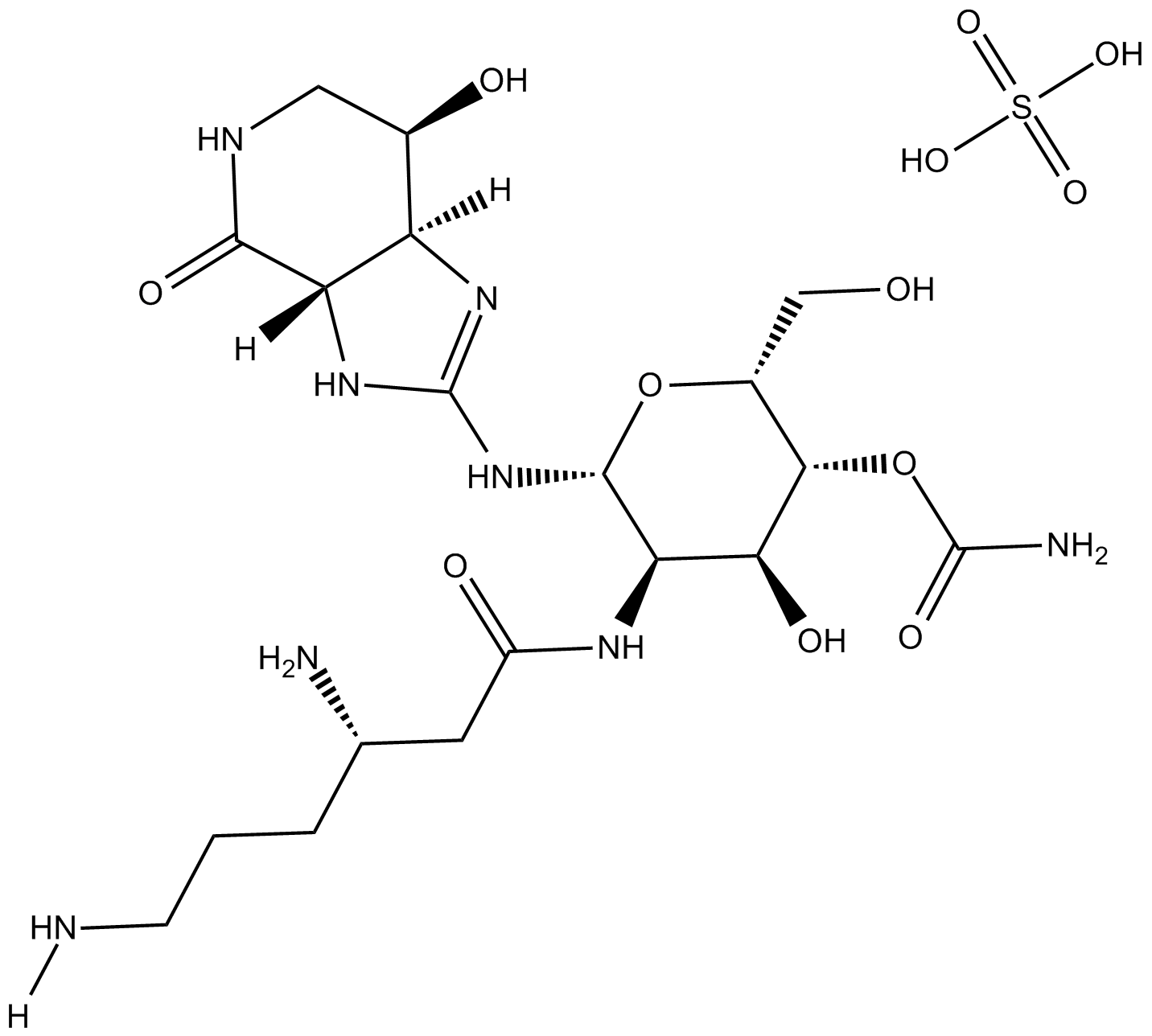Nourseothricin (sulfate) (Synonyms: clonNAT,Streptothricin) |
| Katalog-Nr.GC13632 |
Nourseothricin (Sulfat) (Streptothricinsulfat) ist ein Breitbandantibiotikum, das die äußere Membran gramnegativer Bakterien zerstört und ein dominanter selektiver Marker für Fonsecaea pedrosoi ist.
Products are for research use only. Not for human use. We do not sell to patients.

Cas No.: 96736-11-7
Sample solution is provided at 25 µL, 10mM.
Nourseothricin is a broad-spectrum antibiotic.
Nourseothricin is a broad-spectrum antibiotic derived from Streptomyces noursei.
In vitro: Nourseothricin, represents a mixture of streptothricins, mainly D and F. Although very slowly, nourseothricin was found to be able to pass the outer membrane through the porin pores. It has been also shown that nourseothricin was able to generate some channels into the outer membrane. Moreover, resistant strains containing a streptothricin-inactivating acetyl transferase exhibited an additional protecting system, namely a reduced penetrability of the outer membrane. In addition, such strains indeed could be rendered sensitive via damaging the barrier function of the outer membrane [1].
In vivo: Animal study showed that nourseothricin was preferentially excreted via kidney and signs of nephrotoxicity could be seen. Renal handling of nourseothricin was characterized on renal cortical slices under various experimental conditions. Following administration the renal tubular transport system for organic anions was not influenced by nourseothricin. There was a high degree of accumulation of nourseothricin in renal cortical slices. In contrast to PAH accumulation, there was no influence of nitrogen atmosphere, probenecid or trishydroxyaminomethane on nourseothricin accumulation. Age dependent differences in nourseothricin accumulation did not exist [2].
Clinical trial: So far, no clinical study has been conducted.
References:
[1] Seltmann G. Resistance of Escherichia coli to nourseothricin (streptothricin): sensitization of resistant strains by abolition of its outer membrane resistance. Zentralbl Bakteriol. 1992 Jan;276(2):143-51.
[2] Brunlich H, Hoffmann H, Bocker H. Renal handling of nourseothricin. Pharmazie. 1988 Mar;43(3):200-2.
Average Rating: 5 (Based on Reviews and 33 reference(s) in Google Scholar.)
GLPBIO products are for RESEARCH USE ONLY. Please make sure your review or question is research based.
Required fields are marked with *




















